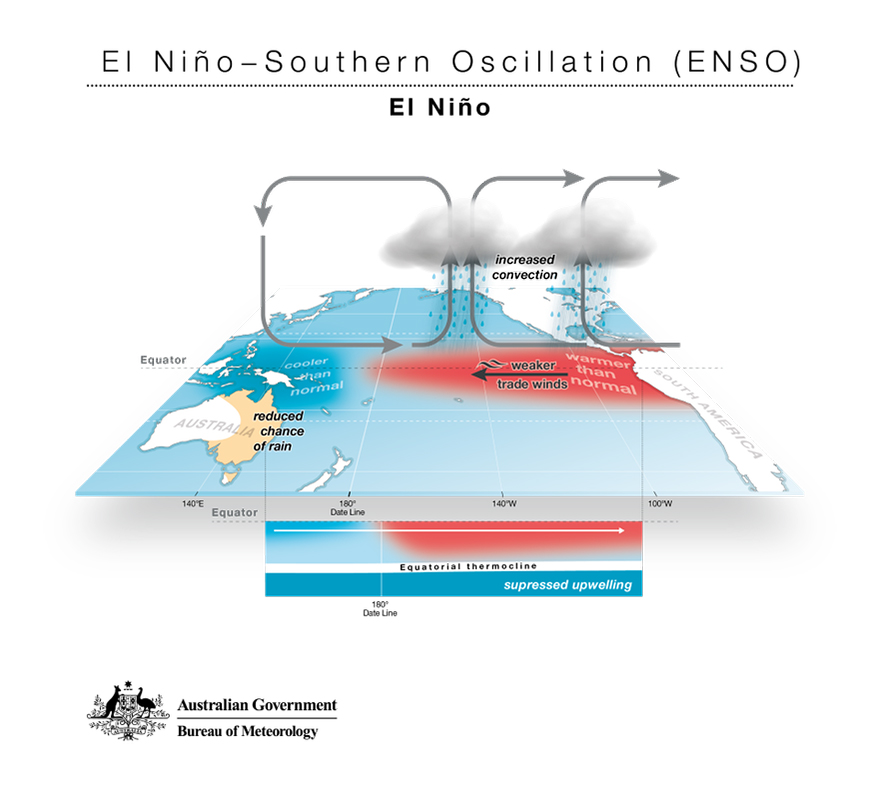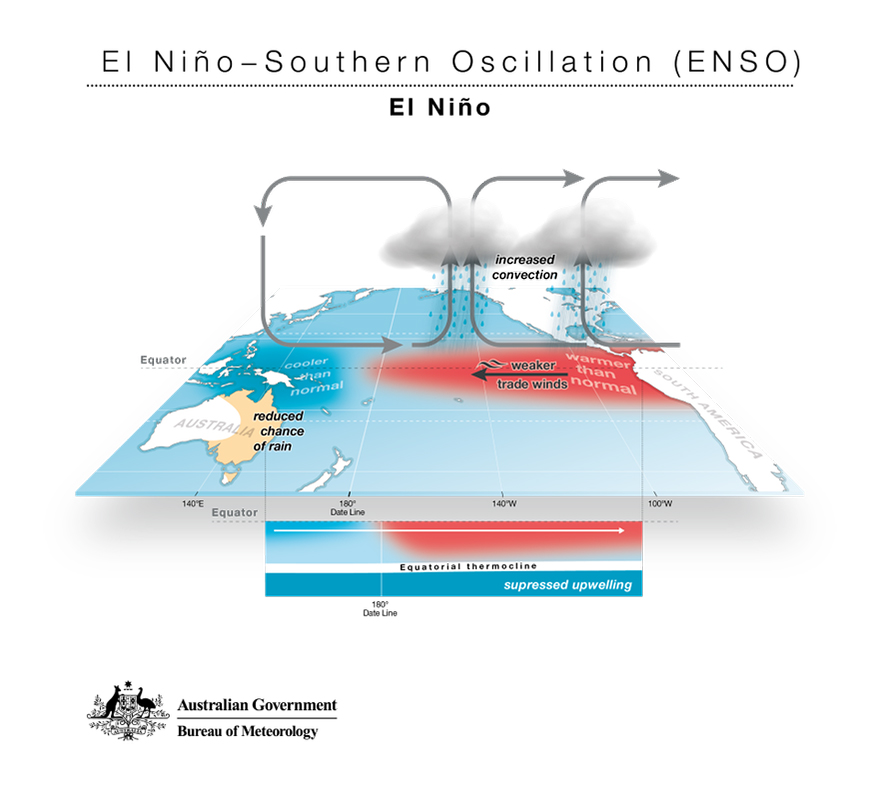
El Niño is characterized by warmer-than-average sea surface temperatures in the central and eastern Pacific Ocean.
? ????????????? ?? ??ñ? ?
El Niño is a natural climate phenomenon that occurs in the Pacific Ocean. Originating in the Pacific Ocean, particularly along the equator, El Niño showcases the complex interplay between oceanic and atmospheric systems. This climate event typically lasts about 9 to 12 months, but sometimes it can extend beyond (NOAA, 2023). El Niño is characterized by warmer-than-average sea surface temperatures in the central and eastern Pacific Ocean, leading to significant shifts in weather patterns worldwide. Under normal conditions in the Pacific Ocean, the trade winds blow from east to the west part of the Pacific Ocean. This strong wind helps to drive ocean currents and maintain the normal circulation patterns in the region. During El Nino, this trade wind weakens and causes the warm water from west Pacific Ocean to move to the eastern side of Pacific Ocean making the sea surface temperature at the central and eastern Pacific Ocean become warmer than usual. This will cause Asian region to experience drought, dry and warmer than usual while vice versa to the eastern Pacific Ocean. They will experience storms, heavy rain, flooding and being wetter. With the weather changes in these two regions, it can have profound consequences for agriculture, water resources, and ecosystems, often leading to crop failures, water shortages, and even displacement of populations. El Niño and upwelling events in the Pacific Ocean are connected. Upwelling involves nutrient-rich waters rising from the deep ocean to the surface, supporting marine life and affecting local climates. Normally, strong trade winds push surface water away from the Pacific coast, causing cold, nutrient-rich waters to well up. During El Niño, this process weakens or stops along the South American coast, disrupting nutrient supply to surface waters. This affects marine life and fisheries. Understanding this relationship is crucial for predicting climate changes, managing fisheries, and protecting marine biodiversity. Moreover, El Niño can influence global temperatures. The excess heat stored in the tropical Pacific Ocean during these events can contribute to a rise in global temperatures, exacerbating the effects of climate change. However, El Niño also plays a crucial role in regulating the Earth's climate system. Its periodic occurrence helps redistribute heat around the globe, impacting weather patterns in ways that are essential for maintaining the planet's climate balance. In conclusion, El Niño serves as a reminder of the intricate dynamics of our planet's climate system. While it can bring both benefits and challenges, studying El Niño offers valuable insights into Earth's interconnected environmental processes and underscores the importance of proactive climate action to build resilience and adapt to changing conditions.

